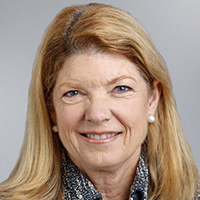Must Read Research
Also featuring commentary from our economists
October 12, 2025

Candace Browning, Head of BofA Global Research
Our U.S. Economics and Bank of America Institute teams harvest another crop of monthly consumer data — tracking everything from the fields of card transactions to the silos of bank deposits. We also dig into shifting housing policy, and PJM’s (Pennsylvania-New Jersey-Maryland Interconnection) growing demand for smarter, steadier power solutions.
With insights drawn from $4.3 trillion in annual payments and 69 million consumer and small business clients, Bank of America card data has provided consistent, near-real-time visibility into spending, household balance sheets, and payroll trends.
An examination of the latest figures suggests that the U.S. consumer remains relatively healthy despite a modest slowdown in September. The higher-income tercile continues to outgrow lower-income to the tune of 200bps+. The Bank of America Institute’s Consumer Checkpoint also offers an overview of overall spending and, this month, delves into generational spending patterns – revealing that Gen X and Millennials have experienced the weakest growth. It also examines the relationship between spending by the top 5% and the S&P 500, as well as comparing transaction count to total spend. The latter indicates modest signs of upward price pressure in tariff-sensitive categories.
Investors initially expected the Trump Administration to focus on demand-side measures to improve housing affordability, but recent commentary and social media posts from the FHFA (Federal Housing Finance Agency) director suggest a shift toward boosting supply instead.
Discussions now center on builders’ lot control, margins vs. history and the potential for Fannie/Freddie to encourage an increased pace of construction. Such policies could pressure margins, and in light of an already difficult environment, U.S. Homebuilders and Building Products Analyst Rafe Jadrosich lowered price objectives for homebuilders. Still, there’s no quick fix for affordability, especially since the resale market far outweighs the new builds. Moreover, the largest builders are concentrated in the South, meaning faster construction would do little to ease affordability challenges in the Northeast or West Coast. Demand side options, from lower rates to MBS (mortgage-backed securities) purchase, remain on the table, but timing and sequencing of initiatives continue to complicate the outlook.
After two decades of declining PJM Interconnection loads, data centers are sparking a new era of demand.
PJM, which spans the mid-Atlantic to Ohio, now expects peak loads will grow by over 3% per year during the next 5 years – driven by surging data center demand, especially in Virginia. Capacity prices, which averaged $59/MW-day, have soared to $270 and $329 for 2025-27 auctions, though term energy prices remain flat. With limited battery storage and stagnant demand response (DR) participation, PJM will need more flexible solutions. “Bring your own generation” (BYOG) is gaining traction as gas-fired projects face cost increases and supply chain challenges. PJM remains heavy in nuclear with fewer renewables, and while solar is growing, subsidy phaseouts and offshore wind uncertainty loom. Head of Global Commodities Francisco Blanch sees the rising load growth as supportive of a bullish long-term outlook for Appalachian gas prices, with demand from new BYOG data centers and gas plants likely to lift regional prices as new pipelines arrive in 2027-28.

Claudio Irigoyen, Head of Global Economics, BofA Global Research
U.S. vs China: Another brick in the wall
On Friday, President Trump announced 100% tariffs on all Chinese imports, in addition to existing measures, starting November 1. In addition, he also said the U.S. would impose controls on exports of "critical software" to China. President Trump suggested the primary driver of his decision is China's expanded restriction on rare earth exports, especially to third world countries. Rare earths have broad applications in civilian and military technology, including smartphones. About 70% of rare earths are mined in China, and 90% are processed in China. Therefore, export controls could create a choke point in global supply chains.
Economic impact
Depending on how export approvals are granted, the effect of China's rare earths restrictions on the U.S. could range from minimal to substantial. A 100pp increase on tariffs on China could in theory raise the effective tariff rate by 11pp, from 16% per our estimates to about 27%. This could add nearly 80bp to core PCE inflation, but in practice we would expect a smaller impact amid substitution and negotiations.
What could happen next? The bull and the bear case
While making predictions is increasingly challenging, we lay out two potential scenarios of how U.S.-China trade relations could develop from here. In either case, we think negotiations would be followed by some de-escalation as a full decoupling remains unrealistic over the medium term. The difference between scenarios therefore lies around the timing and whether there will be further escalation in the near-term.


